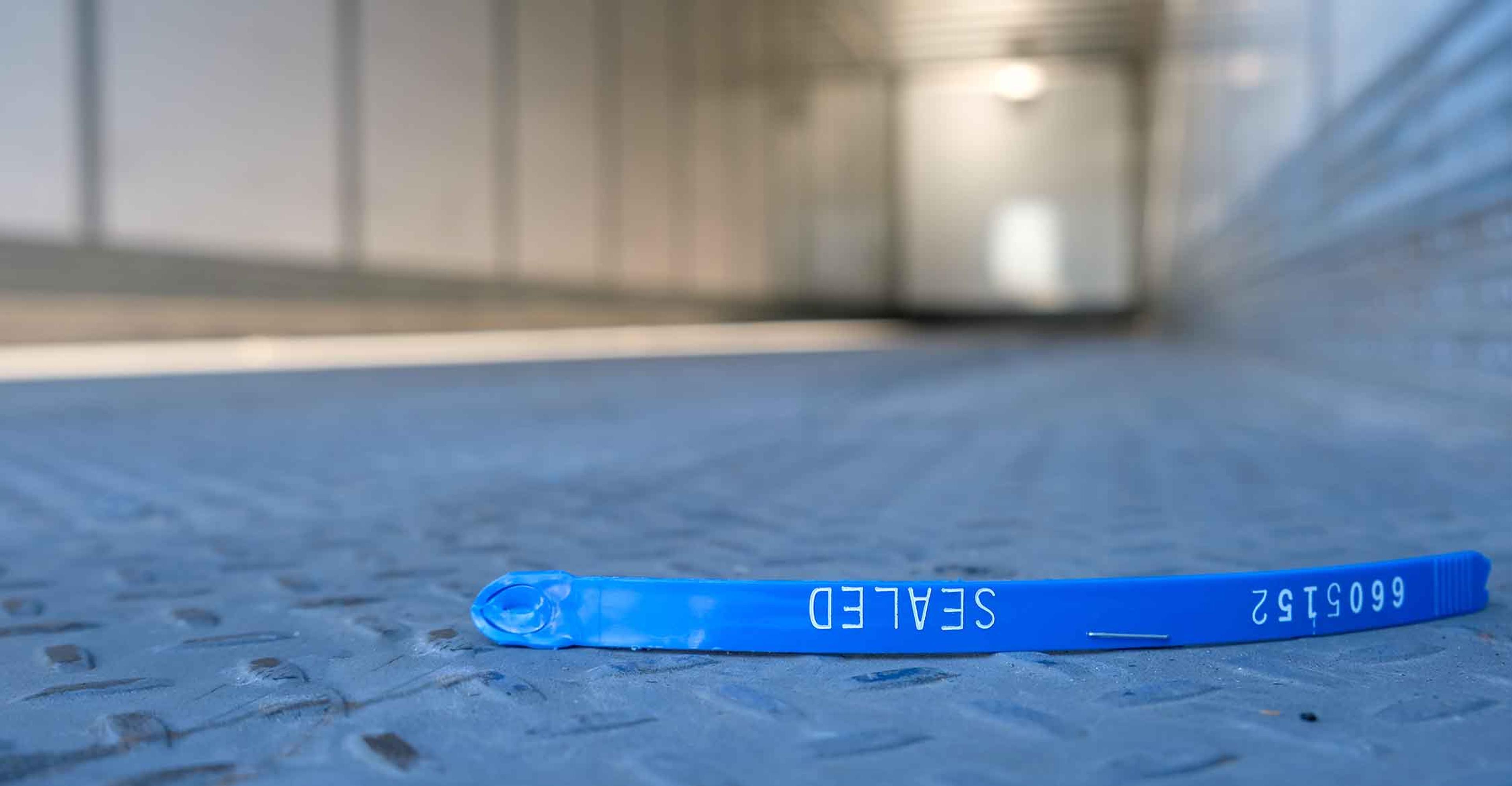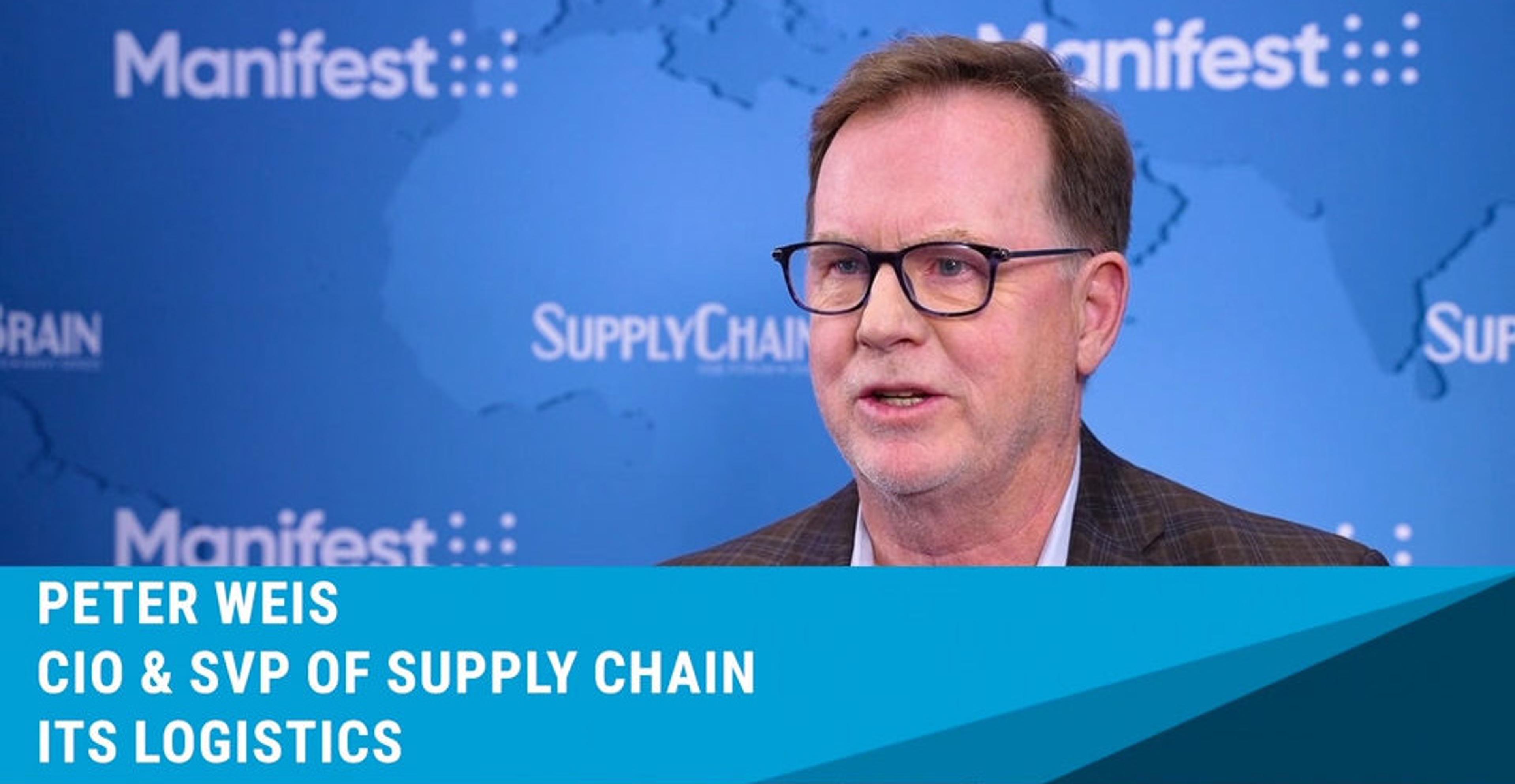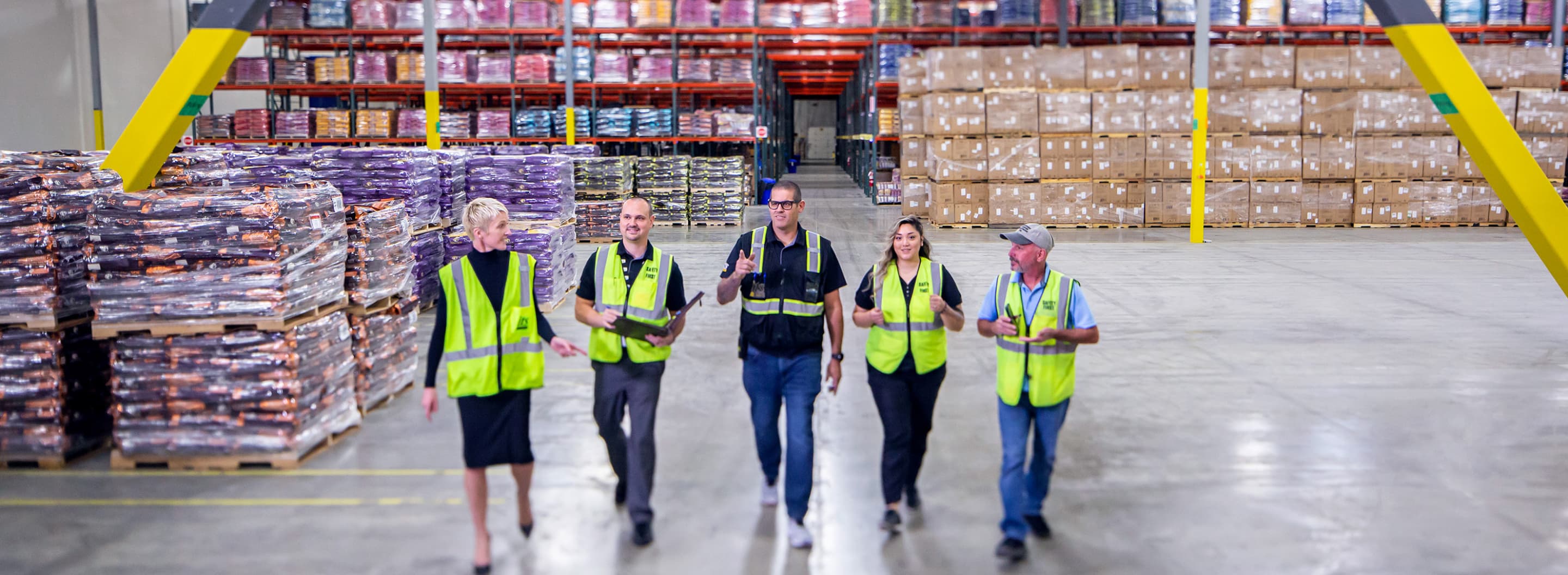
A $150,000 copper heist in Louisiana. A gang of robbers lifting millions of dollars in Nike shoes from a moving train. Nearly 3,000 of the year’s most anticipated gaming consoles stolen from the back of a truck in broad daylight. Freight fraud in 2025 is a big business—bigger than craft spirits, hair and nail salons, and taxis combined, for a projected total of $35 billion a year.
Freight fraud is nothing new, nor is the headline that fraud rates are reaching unprecedented levels. What remains a constant surprise is how bad actors go about committing this fraud. Old strategies get new twists; new strategies pop up and cost millions of dollars in damage before the industry has even written an SOP. 2025 has demonstrated such a varied, aggressive menagerie of fraud tactics that it’s left everyone in the logistics world frustrated and uncertain of what actually works to protect themselves and—more importantly—their freight.
To understand the unique threats of freight fraud in 2025, we brought together three experts on the frontlines of combatting cargo theft—and key contributors to our portfolio of technology vendors:
Michael Grace, VP of Customer Risk Management at Highway, a platform that uses real-time insights for carrier verification, secured communication, and compliance management.
Ryan Joyce, CEO of GenLogs, which leverages a national sensor network and advanced analytics to validate carrier locations and behaviors.
Keith Lewis, VP of Operations at Verisk CargoNet, where and robust data-collection and analysis across industries including insurance, transportation and logistics, retail, and law enforcement tackle theft head-on.
Together, they paint a picture of freight fraud today: One where AI and straight theft collide to create an environment in which freight feels safe nowhere and from no one. Here’s what they’re seeing in 2025:
The Top 7 Methods of Freight Fraud in 2025
Business Email Compromise (BEC) – Michael Grace of Highway says compromised emails account for roughly a third of fraud happening in logistics today. The hijacking typically happens through a phishing link and enables bad actors to appear as carriers or intermediaries, allowing them to coordinate fictitious pickups.
“Most email hijacking happens via phishing, but there are also instances of employees within a company taking bribes and pretending their email was hacked. That’s the scary part,” Grace elaborated.
DOT Inspection Fraud – DOT inspection fraud occurs when a bad actor purchases clean DOT inspections under the table and legally transfers them to a new MC number, typically by claiming the original paperwork was incorrect. With the public record of clean DOT inspections, the bad actor now has credentials that grant them access to higher-value cargo.
“They’ve got street cred,” as Lewis put it.
MC Fraud – In this current spike of MC fraud, fraudsters physically masquerade as a carrier to perform fictitious pickups by displaying false MC numbers on their truck to gain access to docks and yards. Fictitious pickups are not new, but the rise of ill-intended chameleon carriers proves bad actors are becoming bolder. MC fraud is often used in conjunction with a phishing or spoofing strategy, which is how bad actors gain access to load details.
"There's a perception that if we just put cameras at our gates and confirm the DOT matches, you're going to be okay. But there have been a few instances of theft where we get the images afterwards from a shipper, and we compare them to images of what the actual fleet looks like on the road and it's very different,” Joyce noted.
BOL Skimming – In BOL skimming, sometimes known as cluster thefts, a carrier manipulates the original bill of lading to show a reduced quantity of items being delivered. A carrier will pick up 24 pallets, offload 20 for fraudulent use, and deliver four with a falsified BOL indicating this shipment includes only four pallets. The receiver signs the BOL and leaves the PL open in anticipation of the remaining pallets. They never arrive—but the delay in reporting gives fraudsters more opportunity to evade detection and leaves responsibility for the missing freight in limbo.
“The scary part is that these thefts are still showing up—some go as far back as 2018—are just coming to light now. I’ve had one intermediary tell me he’s on the hook for 500 of these loads,” Lewis commented.
Direct Theft – While many are focused on the threats AI poses to freight operations, good old-fashioned straight theft is rising at an alarming rate, according to Grace. While electronics are a common target, everyday commodities like food and tires are being stolen out of trucks, DCs, and rail yards with growing frequency. Incidents of carriers being followed from a DC or rest stops being cased for future attacks are also increasing, meaning freight can be a victim of organized crime and opportunistic criminals alike.
“This is the type of theft I used to see during my fifteen-year career in brokerage, but we’ve seen a resurgence in recent weeks. And with the current market position, it's only going to increase,” warned Grace.
ELD/GPS Spoofing – Electronic logging device (ELD) and GPS spoofing involves manipulating location data to show shipments moving along a specified route, allowing bad actors to disappear with freight virtually undetected—with shippers being none the wiser until the delivery window is missed.
“Unfortunately, it’s very easy—especially with Android systems—to spoof where you are. That ELD or phone-based tracking could show that a carrier is taking a certain route—but in reality, they’re going the exact opposite direction,” Joyce observed.
AI Deepfakes – Generative AI is being used to manipulate and falsify documentation across logistics, from images to verify carrier identity to PODs. AI is also being used to spoof phone numbers and augment a caller’s voice—often to make them sound American. AI virtual agents are a growing tool in logistics, with major players implementing them to book loads and manage check calls. The increasing prevalence of AI voice agents will only make discerning the good actors from the bad more challenging.
“The bad guys are good at taking the tools we use to move our freight faster—and more efficiently— to take advantage of us. Using AI in daily workflows, could result in an increased possibility of seeing bad actors using AI to steal loads,” Lewis explained.
Impact of Holidays on Freight Fraud
The upcoming 4th of July weekend puts another unwanted twist on the fraud crisis. “I don’t like the holidays anymore,” Grace said sarcastically. “You try to vacation, and loads get stolen.”
Summer holidays account for the highest-risk days of the entire calendar year. Verisk CargoNet’s analysis of theft trends over the past five years has identified July first and third as the riskiest days of the year for freight. “Bad actors take advantage of the fact that the A Squad is usually out of the office, and the B Squad is answering the phones,” he explained. “Same with the warehouse. People's mindsets are a little different over the holiday, and they take advantage of the skeleton crews and holiday hours, knowing they won't have a million check calls on that load like they normally would.” Between less experienced team members and a “Five o’clock somewhere” mentality ahead of a long weekend, suspicious behavior and patterns are more likely to go undetected, leaving freight vulnerable to theft.
Business cycles overlapping with these high-risk holidays present challenging situations for shippers and carriers—arguably more than any “B squad” ever could. “We live or die on quarterly pushes and year-end closes,” Lewis explained. “Drivers want to minimize time on the road during the holiday, so they load early to get things off the dock and book the revenue. But if a quarter-end is near a holiday, that comes into play too. There’s more freight on the road, and it's more likely to be sitting. And freight at rest is freight at risk. I say it all the time.” This resting freight is a prime target for direct theft—this includes from trucks as well as at rail yards, where cargo theft has also shown alarming surges as intermodal congestion increases dwell times.
Prevention: What Can Shippers Do?
Verisk CargoNet’s data shows that fraud is trending in the wrong direction, becoming more prevalent, more costly, and ultimately more detrimental to the end-customer experiences. The layered impact means the stakes are higher than ever. Fortunately, rigorous SOPs and mitigation strategies continue to prove themselves effective at mitigating theft. Here’s what proactive organizations are doing to stay ahead:
Leverage Technology
Modern logistics technology offers comprehensive visibility into daily operations, empowering professionals to spot anomalies and suspicious patterns quickly. By blending real-time data with historical records, these tools enable businesses to detect irregular behaviors before they escalate into serious losses.
Joyce emphasized the power of this detailed data, recalling GenLog’s role in the investigation of recent theft of $150,000 worth of copper: “When we plugged the MC into our software, we saw them operating a single box truck near Chicago every day for the past year—until three months ago, when they disappeared. Suddenly this MC bids on the flatbed load of copper in California. It was clear to us that the carrier had gone out of business and the MC had been sold. The ability to analyze activity and ask, Do past patterns add up? is going to help you avoid a lot more of the sophisticated fraud activity.”
Other tools, like Highway, provide secured platforms for brokers and shippers to connect with carriers, circumventing email phishing risks and ensuring you know who you’re talking to when booking freight.“We can't control the carrier's email & cybersecurity training, but we can control their access to Highway,” said Grace.
Embrace 2FA
Beyond emails, multiple authentication checkpoints throughout carrier interactions and shipments enhance security. Joyce highlighted GenLogs’ sensor network as a form of 2FA when freight is already en route: “If an ELD says you’re going one way, we should be seeing that on our sensor network. That’s real-time two-factor authentication. I think this escalation in theft is going to push the market to find new ways to do two-factor authentication on carriers to make sure they are exactly who they say they are and where they say they are.”
Go Back to Basics
Following email security protocols, putting locks on trailers, checking IDs, and maintaining physical security measures are invaluable and often overlooked. Such practical, straightforward approaches form the first and most critical line of defense against freight fraud.
At the end of the day, even the best technology isn't foolproof, so the most basic—and essential—thing logistics professionals can do is trust their instincts. "If something feels off, don't load that truck. If you’re on the phone with a carrier, ask them to drop their VPN so you can see where they’re calling from,” emphasized Grace. “You are the first line of defense for your freight.”
Down markets and periods of fluctuation are often times when the basics are swept aside, increasing the risk of fraud when strong business performance is critical. Joyce warns that downstream impacts of tariffs may put the industry in such a position.“When rates depress too much and capacity starts exiting the market, I think brokers—especially those who haven’t invested in technology—are going to start cutting corners,” he advised.
Have a Freight Recovery Process (Or Work with Someone Who Does)
Even with the best-laid strategies, the worst can still happen. And if shippers do happen to find themselves a victim of freight fraud or theft, it’s important to have a process in place ahead of time to improve the chances of recovery.
Here are some tips on what that process might look like:
- Put teams in place to take specific roles in the reporting and recovery process and build out SOPs (Standard Operating Procedures).
- Report incidents to law enforcement agencies and supporting organizations, like Verisk CargoNet and Highway, as soon as possible. Make sure to include details like the driver’s name and any other available identifiers; truck and trailer information, including VIN numbers if available; and any other available information.
- Have a recovery plan; even if law enforcement recovers the load, you’ll need a driver and tractor ready to rapidly recover it.
Brian Jacobsen, ITS Logistics’ Senior Manager of Network Capacity and Optimization, oversees ITS Logistics’ freight recovery operations. “Thankfully, we don’t need to do recovery very often—our critical incident rate so far this year is .004%. Recovery starts with not losing freight in the first place.”
Combatting Fraud—Together
Like several things better left unspecified, it’s not just about the technology—it’s how you use it.
Successfully combatting freight fraud today demands meaningful collaboration between technology and people. As Lewis emphasized, data alone isn't enough. "You have to have relationships. The connectivity—the handshake relationships we maintain with our clients, like ITS Logistics—that's the difference-maker. Without the human narrative supporting the data, it’s just numbers."
Platforms such as Highway, Verisk CargoNet, and GenLogs arm shippers with real‑time visibility, predictive analytics, and trusted communication—but they're only as powerful as the disciplined processes and knowledge that guide them. At ITS Logistics, every tool is embedded in a cross‑functional workflow that ensures no alert goes unanswered.
Jacobsen explains how that collaboration plays out day‑to‑day: “Our carriers, our technology partners, and our internal teams all run on the same playbook. Pre‑approved contacts gain access only after verification from both Highway and our strategic capacity group. If a carrier sits idle or anything changes in their profile, the systems flag it and our people jump in to re‑vet. Technology gives us the alert—but people close the loop.”
Aside from training, continuing education, and process adaptation are the last and most important part of prevention. It’s not enough to have a set-it-and-forget-it mindset to freight fraud. Bad actors are always adapting to new systems, and there will always be another and more sophisticated fraud attack. It’s up to the industry to continue to innovate and ensure their training, technology investments, and processes are keeping up, which is something ITS Logistics takes very seriously.
Ultimately, protecting your freight—and your business—in today’s challenging environment requires an uncompromising mix of partnership, constant communication, and a commitment to excellence. Though the methods may be complex, the strategy is simple.Be smart. Be aware. Be diligent. Together, we can face down freight fraud and secure the future of our industry.
Secure Your Cargo with ITS Logistics
Don't let your valuable freight fall victim to fraud and theft. Learn how ITS is protecting freight with proactive and industry-leading fraud mitigation.



